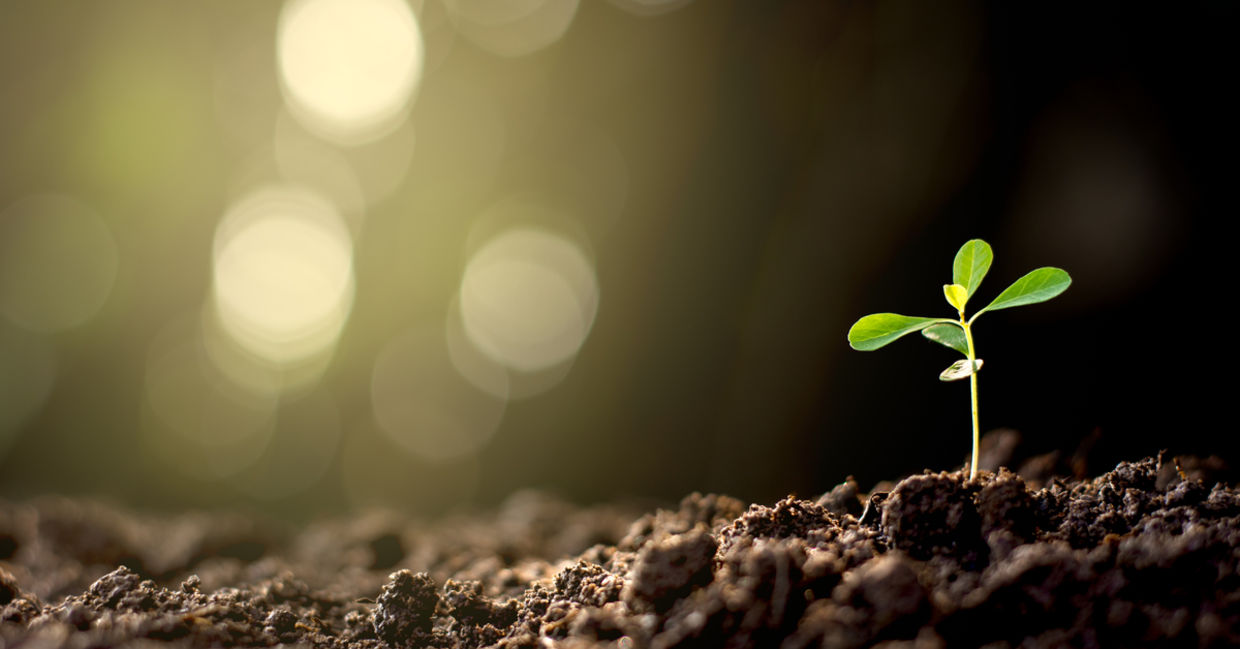
(kram-9 / Shutterstock.com)
Plants need sunlight for photosynthesis, the process of absorbing energy from light to create their own food from carbon dioxide and water. That’s why plants grow and thrive in the warmer months when there is more daylight and are dormant in the colder ones.
But this process isn’t particularly efficient and only 1 percent of the energy contained in sunlight actually ends up in the plant, according to a news release from the University of California, Riverside. Now scientists at the university have found a way to bypass the need for natural photosynthesis and to create food by using artificial photosynthesis. This allows plants to grow in complete darkness. The research was published in Nature Food.
“With our approach we sought to identify a new way of producing food that could break through the limits normally imposed by biological photosynthesis,” corresponding author Robert Jinkerson, a UCR assistant professor of chemical and environmental engineering said in the news release.
Artificial photosynthesis
The researchers used a two-step electrocatalytic process to convert CO2, water, and electricity into acetate – the main ingredient of vinegar – that the plant organisms consumed to grow. The new artificial photosynthesis method could be up to 18 times more efficient than sunlight.
View this post on Instagram
The researchers tweaked the electrolyzer, a device that uses electricity to support the growth of food producing organisms, to come up with the highest levels of acetate ever produced by this method. Experiments showed that a large range of food-producing organisms can be grown using this acetate including: yeast, green algae, and fungi.
“We were able to grow food-producing organisms without any contributions from biological photosynthesis. Typically, these organisms are cultivated on sugars derived from plants or inputs derived from petroleum — which is a product of biological photosynthesis that took place millions of years ago, said Elizabeth Hann, a doctoral candidate in the Jinkerson lab and co-lead author of the study.
“This technology is a more efficient method of turning solar energy into food, as compared to food production that relies on biological photosynthesis,” she said.
Food potential
By eliminating the need for sunlight, the potential of this method to increase food supply in regions with less-than-ideal growing conditions is almost endless, according to New Atlas.
Food will be able to be grown almost anywhere including in space and on other planets. That’s why this project received a win in Phase 1 of NASA’s Deep Space Food Challenge. The international challenge aims to create innovative food technologies that require minimal care and maximum food output to be used for long-duration space travel.
“Imagine someday giant vessels growing tomato plants in the dark and on Mars — how much easier would that be for future Martians?” co-author Martha Orozco-Cárdenas, director of the UCR Plant Transformation Research Center, said in the news release.
While this may be years off, the potential to grow food using artificial photosynthesis has great value in feeding a hungry world where population is growing and arable land shrinking. This new method increases the efficiency of food production using less land and minimizes the environmental impact on the planet.
YOU MIGHT ALSO LIKE:
7 Useful Items That Came From Space Tech
5 Ways to Feed a Growing World Population Sustainably
World’s First Underwater Farm is Growing Fruits and Vegetables







